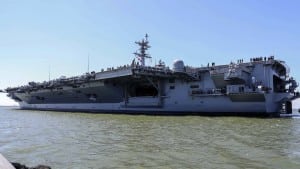
The U.S. Navy’s Nimitz-class aircraft carrier USS Abraham Lincoln (CVN-72) began its first sea trials Tuesday after a four years-long refueling and complex overhaul (RCOH) period.The last time the Abraham Lincoln was underway was in March 2013 before it prepared for the RCOH process at Huntington Ingalls Industries [HII] Newport News Shipbuilding in Newport News, Va.“We are looking forward to taking the ship out on the open water where we belong. I am honored to serve with our crew. This…

 By
By 











